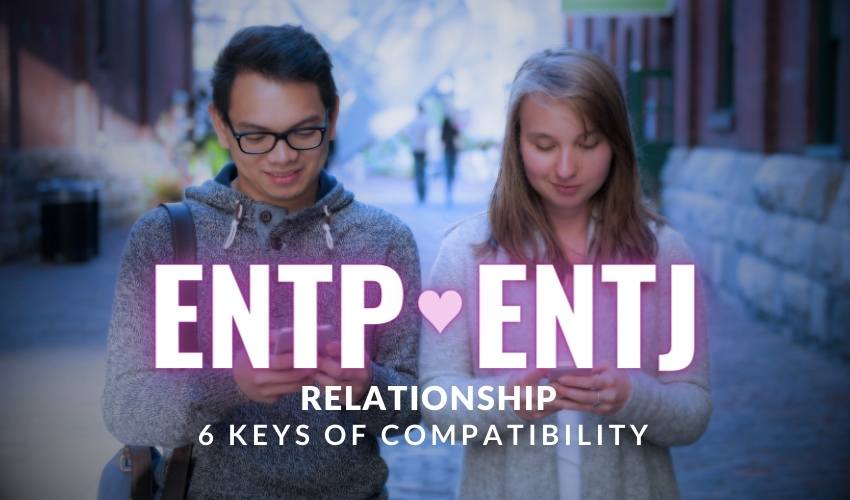ESFP and ESTP are the two extroverted members of the Artisan temperament group. This group, defined by David Keirsey in his book “Please Understand Me”, is characterized by its optimism, spontaneity, and generosity. They, along with ISTP and ISFP are united in their shared focus on the present. Rather than the abstractions and theories that Idealist and Rational types like to entertain, Artisans prefer to focus instead on what is tangible and practical. They are utilitarian in their use of tools and concrete in their use of language.
As extraverted Artisans, ESTP and ESFP in particular are especially outgoing and gregarious. Their capacity to read people and charm them is unparalleled. They are highly adaptable and responsive to their surroundings, giving them a special penchant for improvisation. Unlike their introverted counterparts, ESFP and ESTP are more interested in direct interaction with people and the cultivation of their prowess to persuade, influence and amuse them.
When it comes to romance, these two draw people in with their playful, lively energy. For both ESFPs and ESTPs, the thrill of the moment is key. They enjoy living in the present and may struggle with long-term planning or deep emotional introspection. Their relationships can feel like a roller coaster, full of ups and downs, but always exhilarating. While they might avoid deep emotional conversations, they make up for it with their zest for life and the joy they bring to their connections.
How well do ESFP and ESTP get along as a couple? Although Extraverted Sensing can be a solid basis for their chemistry, there are also drawbacks and challenges to their pairing. Here now is a look at 6 dynamics of the ESFP and ESTP relationship, highlighting both its pros and cons.
1. Balancing Excitement with Responsibility.
With regard to our personality type, we each have our areas of proficiency and deficiency. When searching for a mate, people often seek out partners who complement their own strengths and weaknesses, a concept known as “contrapletion.” In this dynamic, one partner may excel in areas where the other falls short, creating a balanced relationship where each person compensates for the other’s gaps.
However, in relationships between ESFPs and ESTPs, both partners may share a common lack of planning and foresight. Their shared preference for living in the moment can lead to a fun and spontaneous relationship, but it may also result in challenges when it comes to long-term planning or managing responsibilities. Without a partner who naturally provides structure, these two might struggle to stay organized or anticipate future needs. At least one of them will need to assume responsibility but both can do their part and share the burden as a team.
2. Physical Attraction.
Physical attraction often plays a significant role in the connection between ESFPs and ESTPs. As members of the Artisan temperament group, they are among the most sensually ambitious and place a high value on physical appeal. Both types are likely to invest considerable effort into maintaining their appearance, viewing it as a key component of their identity and relationship.
ESFPs and ESTPs thrive on the attention they receive, and being seen as an attractive, desirable partner is important to them. They take pride in turning heads and being the couple that others admire when they’re out together. This shared focus on physical appeal helps keep the spark alive in their relationship, as both are motivated to look and feel their best for each other, reinforcing their mutual attraction over time.
3. Conflict Resolution.
When conflicts arise, ESFPs and ESTPs may tend to react impulsively and avoid getting into deeper discussions about problems. Both personality types typically avoid negative emotions and uncomfortable situations, leading to underlying issues that remain unresolved. To sustain a healthy relationship, it is essential for both individuals to acquire conflict resolution skills.
The key lies in learning to express discontent in a manner that the other person can acknowledge and comprehend. Instead of criticizing or assigning blame, effective communication involves openness and empathy. When tensions rise, taking a break can allow both parties to cool off, but it is crucial to address the problem later rather than letting it linger. Unresolved conflicts can slowly deteriorate the trust and connection that form the foundation of their relationship.
By handling conflicts calmly and transparently, ESFPs and ESTPs can prevent minor disputes from escalating into significant problems. Cultivating this emotional maturity will not only enhance their relationship but also promote personal growth.
4. Exploring Life Together.
ESFPs and ESTPs share a mutual love for outgoing activities and an active lifestyle, making them ideal companions for adventure. Both types thrive on excitement, spontaneity, and the thrill of new experiences. Whether it’s exploring the outdoors, attending social events, or trying out new hobbies, they are likely to find a partner in each other who is just as eager to jump in and make the most of life.
In this relationship, neither partner is likely to be a drag or a killjoy. Instead, they will encourage each other to stay active, seek out fun, and embrace the energy of the moment. Their shared enthusiasm for living life to the fullest allows them to enjoy quality time together, creating memories through a variety of exciting and thrilling activities. This mutual passion for adventure strengthens their bond, and can be the key to keeping their relationship fresh and interesting.
5. Ti vs Fi.
Like other Feeling types who partner with Thinking types, ESFPs and ESTPs can encounter challenges due to their differing emotional needs and sensitivities. ESFPs, guided by Introverted Feeling, tend to be more in tune with their own emotions and the emotional needs of others. They value harmony and may seek deep, personal connections. On the other hand, ESTPs, guided by Introverted Thinking, prioritize logic and objective analysis, often focusing on problem-solving over emotional expression.
These Fi vs. Ti differences can create friction in the relationship, as the ESFP may feel that their emotional needs are overlooked, while the ESTP may struggle to understand or meet those needs. Navigating these differences requires patience, empathy, and a willingness to bridge the gap between emotional sensitivity and logical reasoning, allowing both partners to feel valued and understood.
6. Lovers and Rivals.
Competition and jealousy can indeed strain the relationship between ESFPs and ESTPs. Although normally sanguine, generous and good-humored, these Artisan extroverts also have a competitive side and a capacity for pettiness. Both types enjoy being in the spotlight, which can sometimes lead to tension if they perceive each other as rivals rather than partners. Their shared desire for excitement and recognition can spark feelings of jealousy, especially if one feels overshadowed or undervalued by the other.
In a relationship, this dynamic can create a cycle of one-upmanship where each partner tries to outshine the other, leading to misunderstandings and resentment. To maintain harmony, it’s important for both ESFPs and ESTPs to celebrate each other’s successes and find ways to support one another rather than compete.
| ESTP | ESFP | |
|---|---|---|
| dominant | Extraverted Sensing (Se) | Extraverted Sensing (Se) |
| auxiliary | Introverted Thinking (Ti) | Introverted Feeling (Fi) |
| tertiary | Extraverted Feeling (Fe) | Extraverted Thinking (Te) |
| inferior | Introverted Intuition (Ni) | Introverted Intuition (Ni) |
Pros:
- Electric Chemistry: When an ESFP and an ESTP come together, sparks fly – their shared zest for life and magnetic personalities create an undeniable chemistry that draws them towards each other like moths to a flame.
- Adventurous Spirit: Both types thrive on excitement and adventure, making them the ultimate partners-in-crime for exploring new places, trying new experiences, and living life to the fullest.
- Social Butterflies: With their outgoing and sociable nature, ESFPs and ESTPs effortlessly charm their way into any social setting, creating a vibrant and lively atmosphere wherever they go.
- Spontaneous Fun: From impromptu road trips to spontaneous dance parties, life with an ESFP-ESTP duo is anything but boring – their spontaneous antics keep the excitement levels sky-high.
- Shared Interests: Whether it’s hitting the club scene, attending music festivals, or indulging in adrenaline-pumping activities, ESFPs and ESTPs share a plethora of interests and hobbies that keep the good times rolling.
- Mutual Understanding: Both types value living in the moment and enjoying life to the fullest, creating a deep sense of understanding and camaraderie that forms the foundation of their relationship.
- Unwavering Support: Despite their occasional differences, ESFPs and ESTPs offer unwavering support and encouragement to each other, celebrating each other’s successes and providing a shoulder to lean on during tough times.
Cons:
- Commitment Issues: Both types may struggle with commitment and long-term planning, preferring to live in the moment rather than thinking about the future, which can lead to instability and uncertainty in the relationship.
- Attention Seeking: ESFPs and ESTPs both crave attention and validation, which can sometimes lead to competition or jealousy if not managed properly.
- Conflict Escalation: Both types can be hot-headed and stubborn, leading to heated arguments and conflicts that escalate quickly if not addressed with patience and understanding.
- Emotional Depth: ESFPs may desire more emotional depth and connection than ESTPs naturally provide, leading to feelings of dissatisfaction or unfulfillment in the relationship.
- Impulsivity: With their penchant for spontaneity and impulsivity, ESFPs and ESTPs may struggle with making responsible decisions or considering the consequences of their actions.
- Need for Freedom: Both types value their independence and may resist any attempts to restrict or control their freedom, leading to clashes over boundaries and personal space.
- Risk-Taking Behavior: ESFPs’ willingness to take risks may clash with ESTPs’ desire for stability and security, leading to disagreements over decision-making and risk management.
In conclusion, the ESFP-ESTP relationship offers an exhilarating blend of passion, excitement, and adventure, but it also presents challenges related to commitment, emotional depth, and conflict resolution. Yet, with mutual respect, open communication, and a shared sense of adventure, these two personalities can create a relationship that is as thrilling as it is fulfilling, celebrating the joy of living life to the fullest.

Want to know your astrology placements? You can generate your astrology chart here with our free birth chart generator tool.
Related Posts:
- ISFP and ISTP in love: 5 Dynamics of their Relationship.
- 6 Reasons Why INTJ and INTP Fall In Love
- ENTP and ENTJ in love: 6 Critical Dynamics of Their Relationship.
- ENFP and ENFJ in love: 5 Aspects That Make This Relationship Work.
- ISFJ and ISTJ in love: 5 Essential Dynamics of their Relationship
- ESTJ and ESFJ in love: 4 Key Aspects of their Relationship.
- 6 Reasons Why INFP and INFJ Fall In Love
- American Presidents Ranked By Zodiac Sign - January 20, 2025
- ESTP and ESFP in love: 6 Dynamics of Their Relationship - September 4, 2024
- ISFP and ISTP in love: 5 Dynamics of their Relationship. - August 28, 2024








